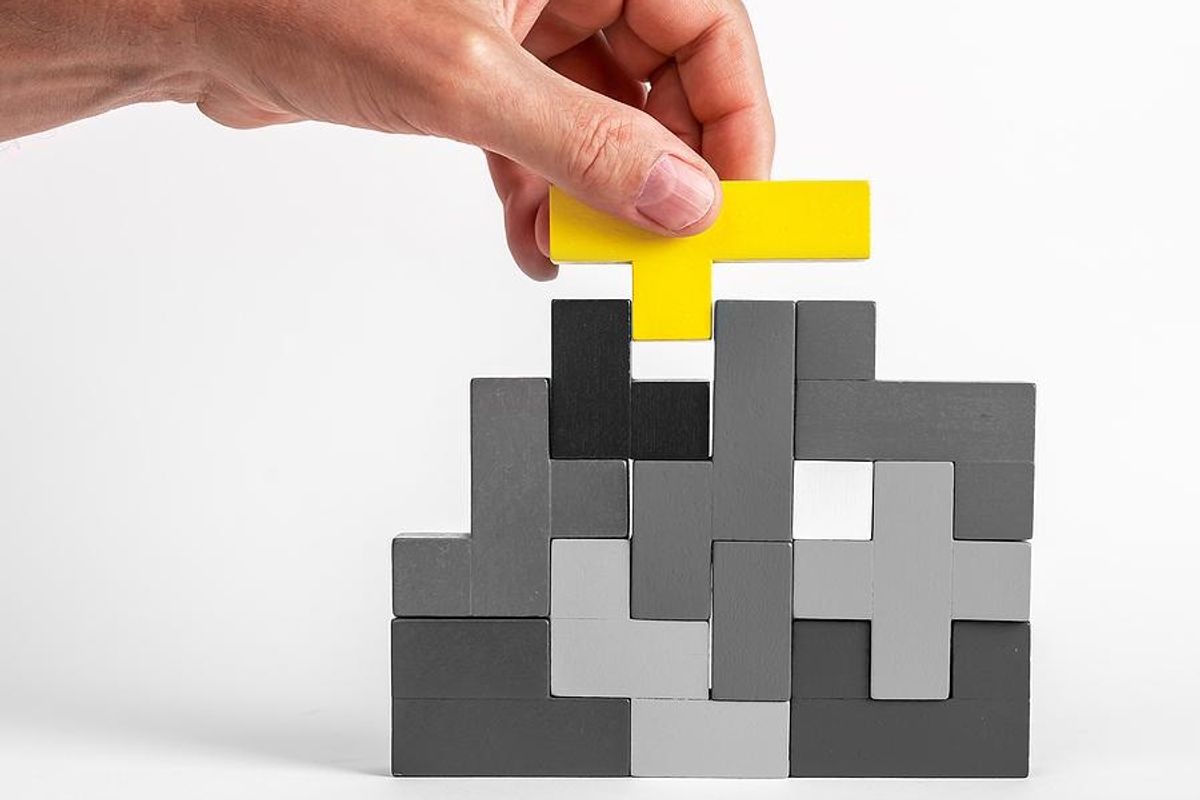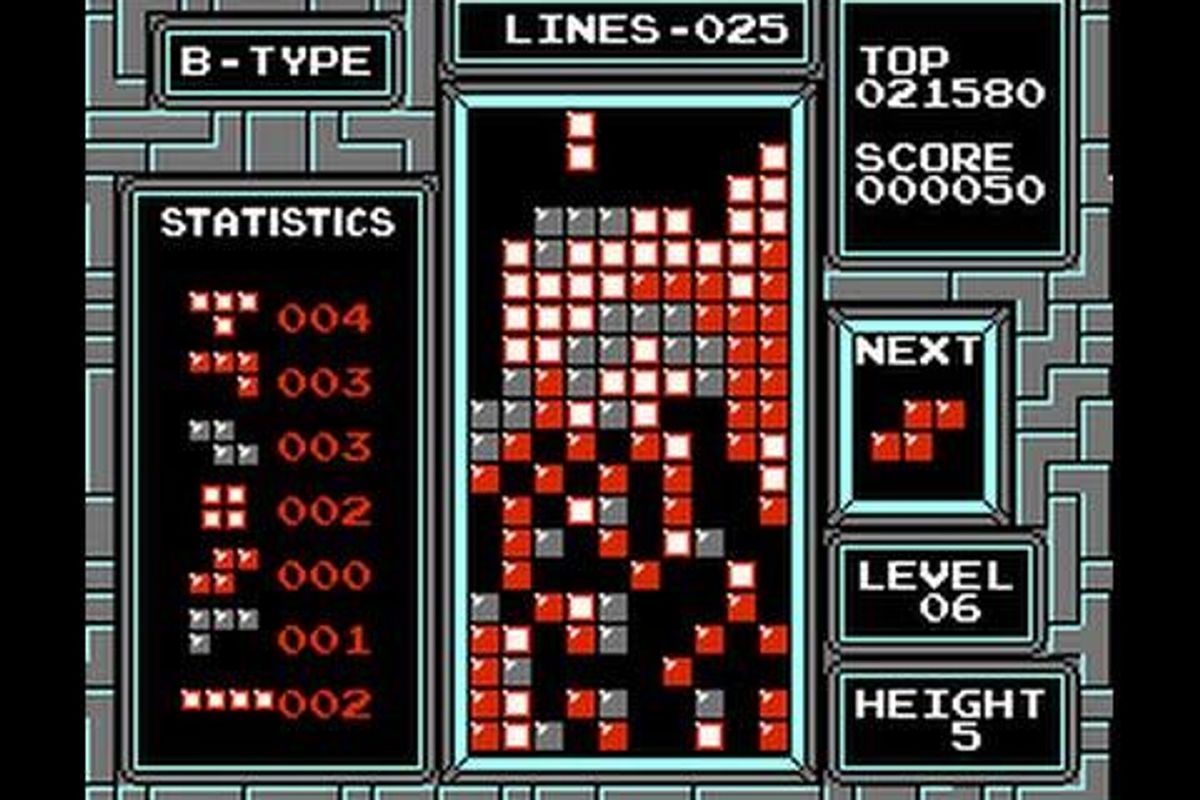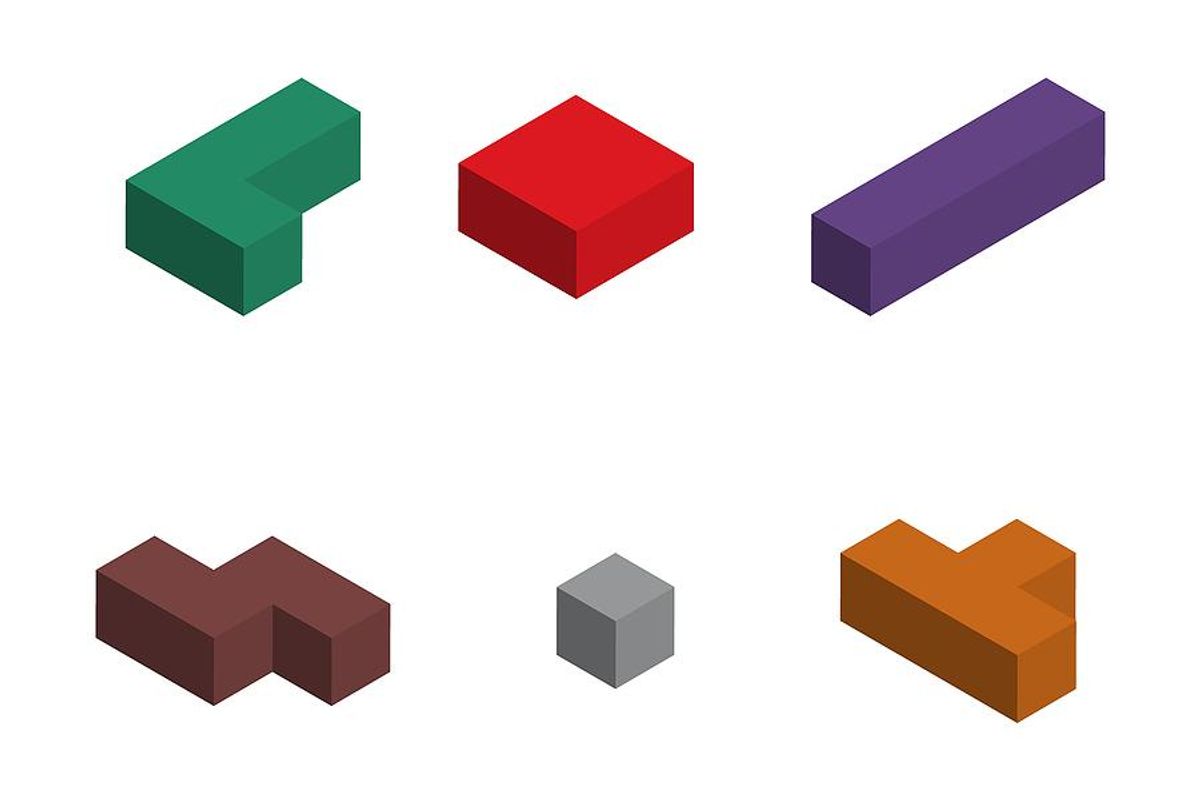
Nearly every day, I play TETRISA® 'B-Type' to awaken my brain. The games are short, and my goal is to clear three consecutive games.
Playing helps me with focus in beginning my day. The more successful I am at reaching my three-game goal, the more focused I know I am. Days when that goal is a challenge, I recognize I may not be fully present.
The game teaches me to remember strategy. As an engineering executive/project manager, strategy plays into my work daily. I am continuously working on how to position my team for the next challenge, how to prevent problems, and moving assets into place. Sound familiar?
What Is B-Type TETRISA®?

TETRIS is a geometric puzzle where pieces of various shapes drop to form rows. Each shape is made of four blocks, randomly presented for placement. When a row of ten blocks completes, they clear from the game board. Clearing multiple rows is strongly encouraged, and when clearing four rows in one placement, you have earned a 'TETRIS.'
B-type TETRIS begins with random blocks and pieces already in place. The blocks fall to clear the 'mess' given by the system. Users may select speed of how fast the blocks fall and select the level of height of the predefined blocks.
Winning B-type TETRIS is achieved by clearing 25 rows before stacking the pieces filling the board. If a piece falls immediately colliding with another piece, the game is over. When you win, the game rewards the player with clever Russian-style graphics.
TETRISA® & Strategy?

Project management and engineering are similar. Required work has a series of constraints at the beginning of every project (random blocks placed on the board). Each project is within a predefined time schedule (speed of the game). Each unplanned act of people or assets creates challenges (random pieces generated by the game).
Your goal as a leader'¦ clear your 25 rows before ending the game. In a perfect world, you will clear rows cleanly eliminating all preplaced blocks at the same time. The execution of your project clears the game board.
Taking One Row Making Small Progress Versus A Full TETRISA® Clearing Multiple Lines?

My goal as a teenager was to clear four rows with a 'TETRIS' every single time! You build these patterns and drop a straight piece clearing four rows simultaneously! The screen blinks beautifully signaling your victory!
With B-type, you have the reality of obstacles. You cannot always build the perfect four-row structure to clear everything at once. You need to work sometimes one row at a time.
Working one row is more time consuming. You carefully place blocks into structures to eliminate your 25 rows with individual placements.
Building for the TETRIS takes strategy. You sacrifice clearing a row to allow the height to accumulate. You place blocks hoping to drop the straight piece and clear the rows. Then reality hits'¦
The system randomly generates blocks. What if the straight piece does not come? What if you only get square pieces three times in a row? How do you win if the system will not provide the piece you need?
Enter strategy'¦ you may need to sacrifice the TETRIS you are building and only clear one or two rows. Other times, you may risk continuing to build height of the structure making losing more probable.
As a leader of multiple projects, I typically take the quick victories and clear the obstacles as I can. Making small progress is often better than losing the game entirely. I work through the little pieces in hopes the bigger issues will resolve themselves during the process.
When responsible, you need to weigh your options carefully. Make sure any single points of failure (the straight piece) has a back-up plan. Going for gold is sometimes your only choice. Simply step back and be prepared to pivot when the game does not deliver.
Waiting For That Perfect Piece To Clear A Roadblock'¦

With the predefined blocks set at random, the game often shows the player the perfect shape to clear a problem. The shape teases you showing how easy it is to clear the jam and provide more room on the board. It taunts me.
In complex projects, leaders often rely on the perfect piece. Sadly, the random pieces do not always come through. I have had some luck in my career in finding the perfect piece to clear my rows. More often than not, I work with what the game has given me.
If the game does not provide the perfect piece, how do you respond? You need to sacrifice a long-term goal (building a TETRIS) with a short-term gain (clearing one row). Leaders must recognize this missing element, and the hard choice is taking one row versus four.
What Happens When You Cannot Clear Your Lines?

I lose more than I win. Somedays, my mind is unfocused and I do not win a single game.
I always work to build the lines and clear them consistently. I risk building a taller structure versus the consistent wins. My stack gets too high, pieces collide, and I lose. GAME OVER.
Is it really? I can press start twice and begin again. New game, new random pieces. I can change the rules by slowing the speed or lowering the height. I can manipulate variables to help me win.
Me, I am stubborn'¦ fastest speed and tallest height every time. And I lose. Why do I continue to play with these constraints?
Projects come in all levels of complexity and development cycles. Most projects are highly complex and have just enough time to complete. Then, you add the random elements you did not anticipate.
In projects, you will fail. Missing a deadline, failing a test, forgetting a requirement, and simply missing the mark. Depending on your response, you can recover. You can ask the customer to play again. You can adjust the parameters. You can accept 23 of the 25 lines as success.
You can learn from the game not everything is a zero-sum total. You can plan for everything to be right and still miss because the perfect piece never fell. You can build that structure and create a collision.
By learning these lessons, I make better decisions in subsequent games. I learn from the mistakes when I play again. I never truly lose.
How Is Any Of This Gameplay Relevant To Me?

TETRISA® is the mechanism I chose for some entertainment. Some fun as you read my words. The game is not important.
Projects are never linear; they are geometric. Time rarely runs in your favor and is often behind when you begin. The roadblocks to success provide obstacles within your path. Random pieces will fall towards you during the project.
The lesson'¦ learn from the mistakes and make better decisions within the game. Use the applied knowledge for the next play. Take risks when it makes sense, and choosing quick wins can reap rewards.
TETRISA® is an amazing game, and the game will be played many decades from now. I enjoy the three-minute challenges it presents me daily. I love how it reminds me of life lessons to apply in my work. I challenge you to look at something you enjoy and see lessons it teaches you. I encourage you to play TETRIS'it may help with your strategy to deal with life''s challenges.
Good luck, and clear those lines!




